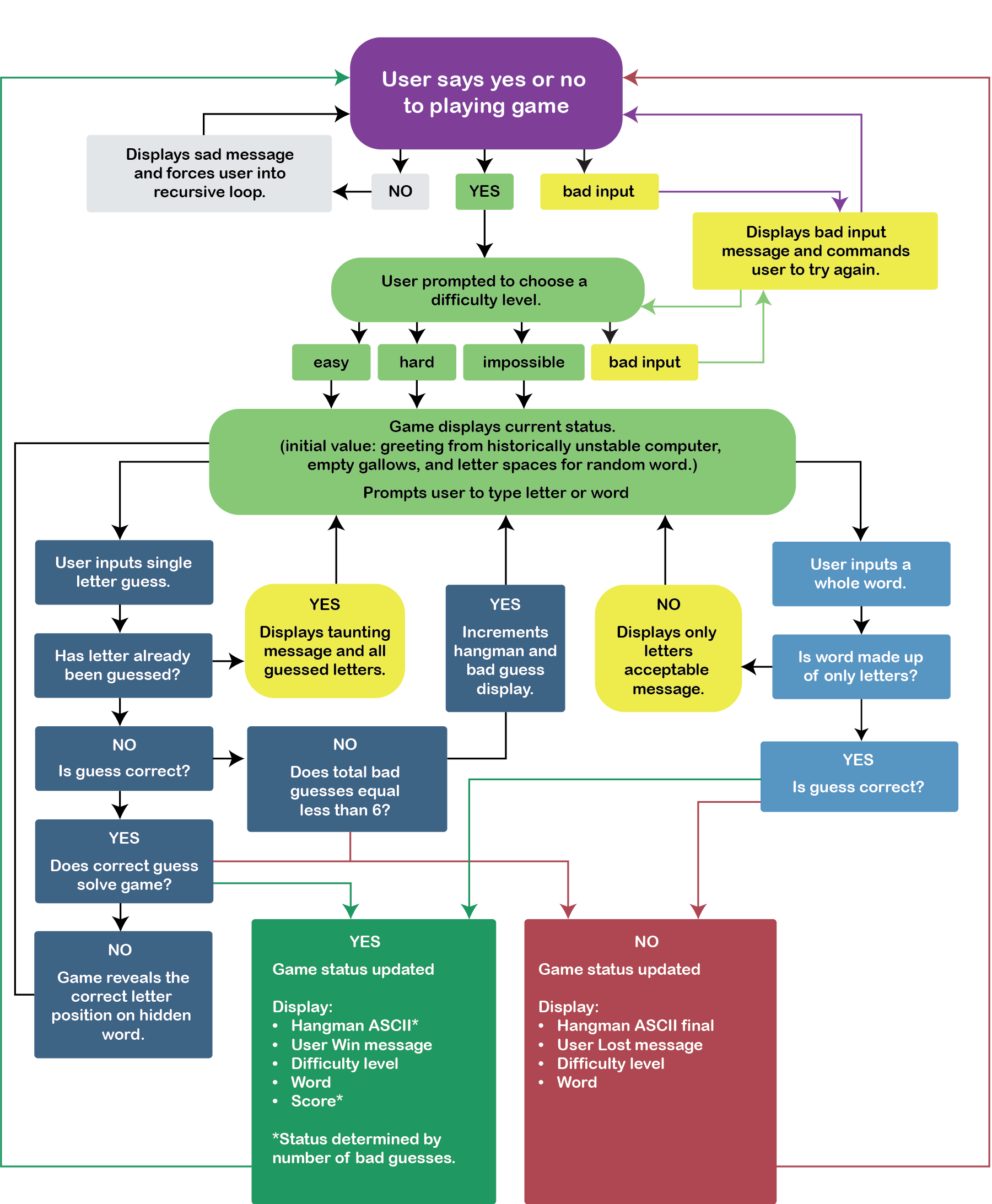Creators
Additional contributors: Blessing Ebowe, Brian Borin
Contents
Team Goal: Create Hangman Game

Use Cases:
- User says NO to playing game
- User can choose Easy, Hard, or Impossible level
- Input is correct letter
- Input is incorrect letter
- Input is empty
- Input is not a letter (number or special character!)
- Input has been previously guessed
- Input is a word (possible sudden death!)
- Game is over. What happens next?
Lessons Learned
planning is the biggest part of team coding
- Design program flow
- Do UI mockups
- Choose style guide
- Coordinate teammates’ schedule and availability
- Assess individuals’ skills and interests
- Assign roles and responsibilities
- Identify technical unknowns
- Pick tools for communicating
- Set a base goal (minimum deliverability)
- Set a reach goal (ideal design)
good technical communication is good team work
- Figure out how to use your communication tools (Zoom, Repl.it, Codepad, Slack, good old fashioned telephone, etc.)
- Commenting code saves time later
- Progress should be reviewed at regular intervals
- Working on different schedules allows for continuous development
- Breaks aren’t a bad thing… fresh eyes help everyone!
- The first way will not necessarily be the final way
- Refactoring team coded programs is hard
Future Iterations
- Multiple players - store names and scores in individual objects
- Different computer personalities - Mean or nice computer
- Hint option - user pays via score decrementation
- Adding another game - e.g. Wheel of Fortune
- Add ability to have phrases
- Refactoring the code to use ES6
- Restructuring the order that functions and function calls appear to make the code more readable
Biggest takeaway?
It was stressful working on a tight deadline, but we’d do it again in a heartbeat!



